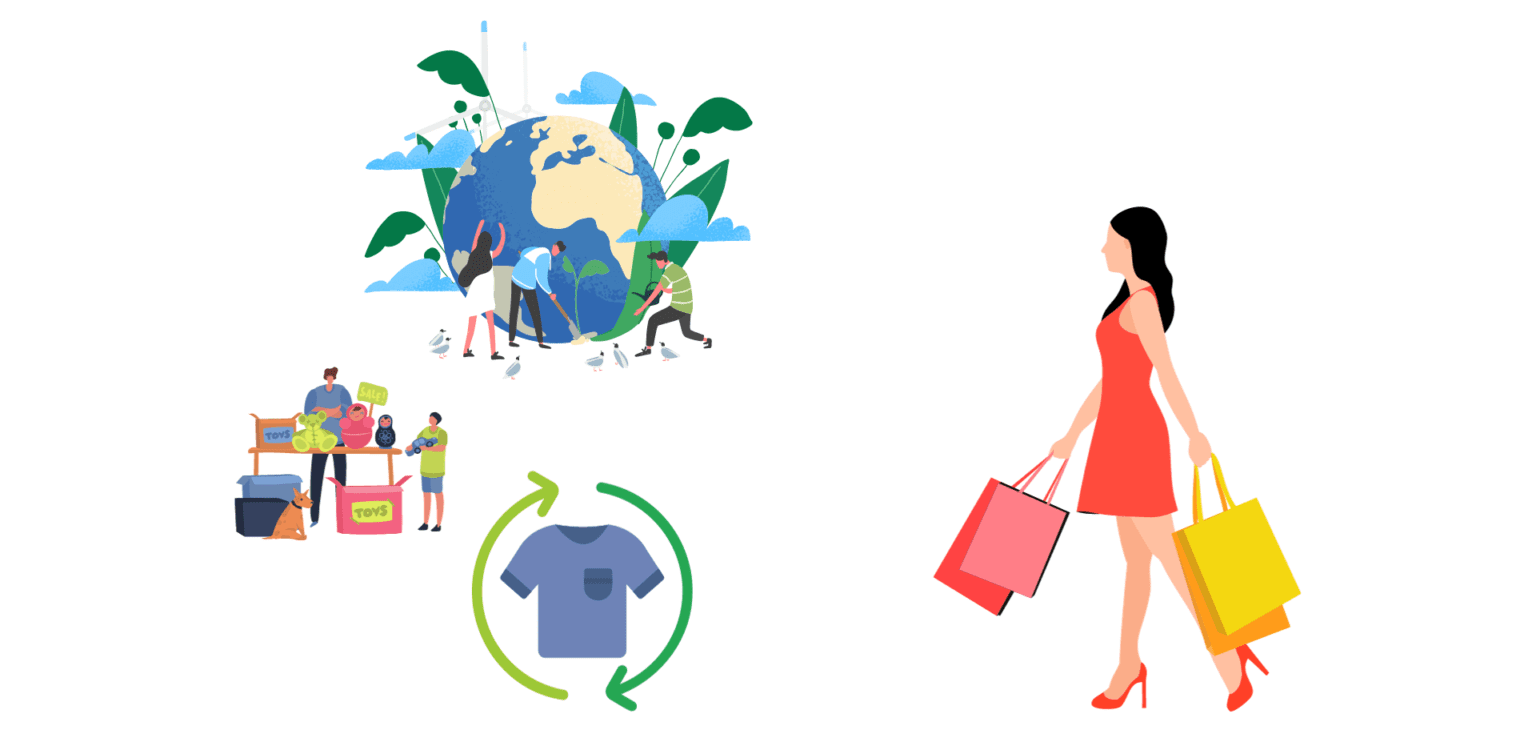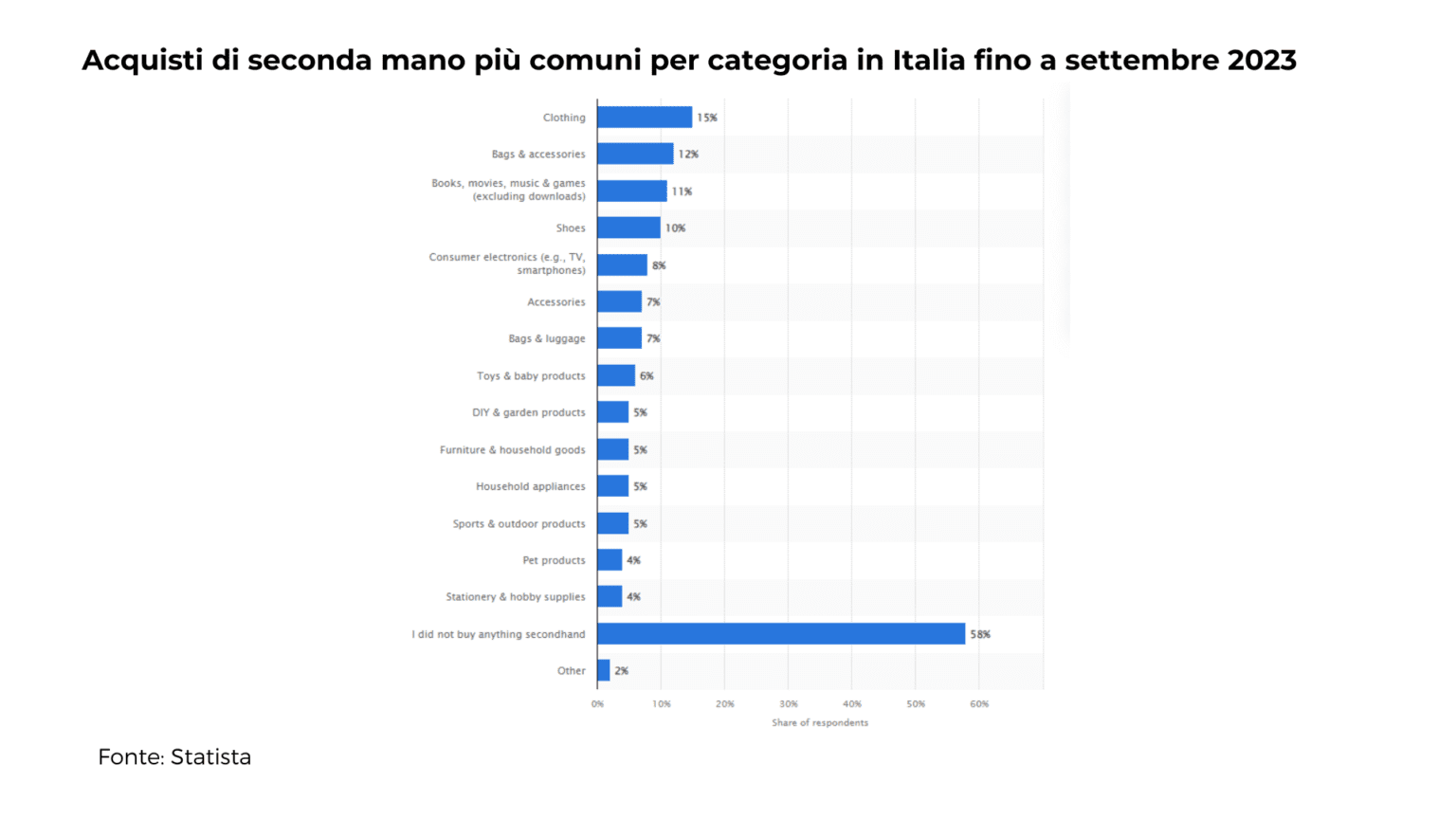Today, in the world of e-commerce, a fast-rising trend is redefining the way we buy and sell: the second-hand marketplace.
With the growing interest in sustainability, the search for affordable bargains, and the attraction for unique and timeless pieces, buying second-hand products online is gaining in popularity.
Exploring the world of second hand in e-commerce not only opens the door to a universe of economic opportunities, but also makes a significant contribution to reducing waste and extending the life cycle of products.

Great attention to the second hand
As is clear from the new 2023 world marketplace map, conducted by Yocabe and recently published online, there is a growing interest in the secondhand marketplace, with an increasing focus on recycling, sustainability, and waste reduction.
Product longevity, then, becomes a pivotal factor within a landscape as complex and diverse as the digital one.
Second hand: the moment of recommerce
In the second hand scene, recommerce is experiencing unprecedented expansion, led by platforms such as Vinted, Wallapop e Depop, which are revolutionizing the concept of shopping by making recycling a twin trend of sustainability. Vinted, in particular, has established itself as the leading benchmark.
Since its arrival in Italy in 2020, Similarweb ‘s data show an average of 5.8 million monthly visits to the site, an interesting number but nowhere near the 25.8 million recorded in France, where Vinted has an even more established presence.
In Spanish second-hand market, Wallapop records about 22 million monthly visits, while Vinted stands at around 4.6 million.
However, globally, the United States emerges as the leader in secondhand sales, with platforms such as Poshmark boasting an average of 51 million visits per month, followed by Thredup with 14 million and Therealreal with 13 million.
Marketplace: sustainable innovation serving consumers
Marketplaces, in tune with the growing trend of sustainability, have launched significant initiatives. Amazon is committed to achieving carbon neutrality by 2040 with“The Climate Pledge,” while Zalando promotes sustainable fashion through“do.MORE.”
Yoox focuses on product longevity with the“Infinity” project, while Veepee, eBay e Manor reduce waste and address sustainability in different ways through“Upcycling,” the“Reconditioned Program,” and“RETHINK EVERYDAY.”
Italians' second hand purchases
According to Statista, regarding the second-hand market in Italy, the preference of the majority of consumers leans toward buying second-hand clothing, followed by handbags and accessories. In contrast, Italians are less inclined to buy used stationery and hobby materials.

From a 2023 survey published by Statista, it found that the main motivation for shoppers in France, Germany, Italy, and the United Kingdom in buying secondhand clothing is the lower price. Between 40 and 50 percent of respondents cited sustainability as the main reason for buying second-hand clothing.
Second hand: the time for sustainable shopping
In conclusion, the phenomenon ofsecond hand e-commerce is not only a reflection of changes in shopping habits, but represents a significant step toward a more sustainable lifestyle.
The opportunity to give new life to products, the search for one-of-a-kind pieces, and the focus on reducing waste are shaping a new landscape in e-commerce.
This movement not only offers economic benefits to shoppers, but also helps reduce environmental impact by promoting a conscious approach to consumption. With continued support and growing interest in this practice, second hand e-commerce is shaping a more sustainable and conscious future for the online retail industry.





